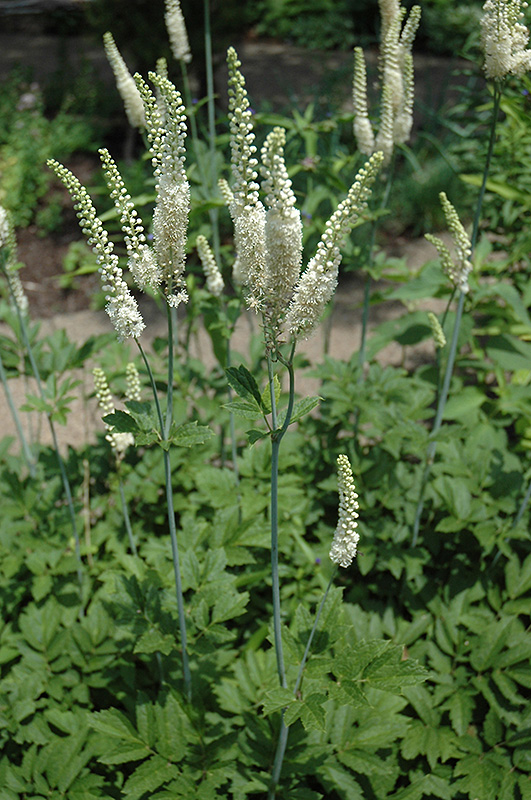Digging deeperPlant Library
Plant Height: 3 feet
Flower Height: 5 feet
Spread: 3 feet
Sunlight:
![]()
![]()
Hardiness Zone: 3
Other Names: Black Snakeroot, Black Cohosh, Actaea racemosa
Ornamental Features
American Bugbane features bold spikes of fragrant white flowers rising above the foliage from mid to late summer. The flowers are excellent for cutting. Its attractive serrated compound leaves remain green in color with prominent deep purple tips throughout the season. The brown fruits are carried on spikes from late summer to late winter.
Landscape Attributes
American Bugbane is an herbaceous perennial with an upright spreading habit of growth. Its relatively coarse texture can be used to stand it apart from other garden plants with finer foliage.
This plant will require occasional maintenance and upkeep, and is best cleaned up in early spring before it resumes active growth for the season. It has no significant negative characteristics.
American Bugbane is recommended for the following landscape applications;
- Mass Planting
- General Garden Use
- Naturalizing And Woodland Gardens
Planting & Growing
American Bugbane will grow to be about 3 feet tall at maturity extending to 5 feet tall with the flowers, with a spread of 3 feet. It tends to be leggy, with a typical clearance of 1 foot from the ground, and should be underplanted with lower-growing perennials. It grows at a slow rate, and under ideal conditions can be expected to live for approximately 10 years. As an herbaceous perennial, this plant will usually die back to the crown each winter, and will regrow from the base each spring. Be careful not to disturb the crown in late winter when it may not be readily seen!
This plant does best in partial shade to shade. It is quite adaptable, prefering to grow in average to wet conditions, and will even tolerate some standing water. It is not particular as to soil type or pH. It is somewhat tolerant of urban pollution. This species is native to parts of North America. It can be propagated by division.
A NetPS Plant Finder tool
This Plant Library is for informational purposes only. We may or may not carry the items listed. During many times of the year, we may carry many more plants in our store than are listed in the Plant Library. Please contact us directly at 303-690-4722 or visit our store for current availability and for assistance.
